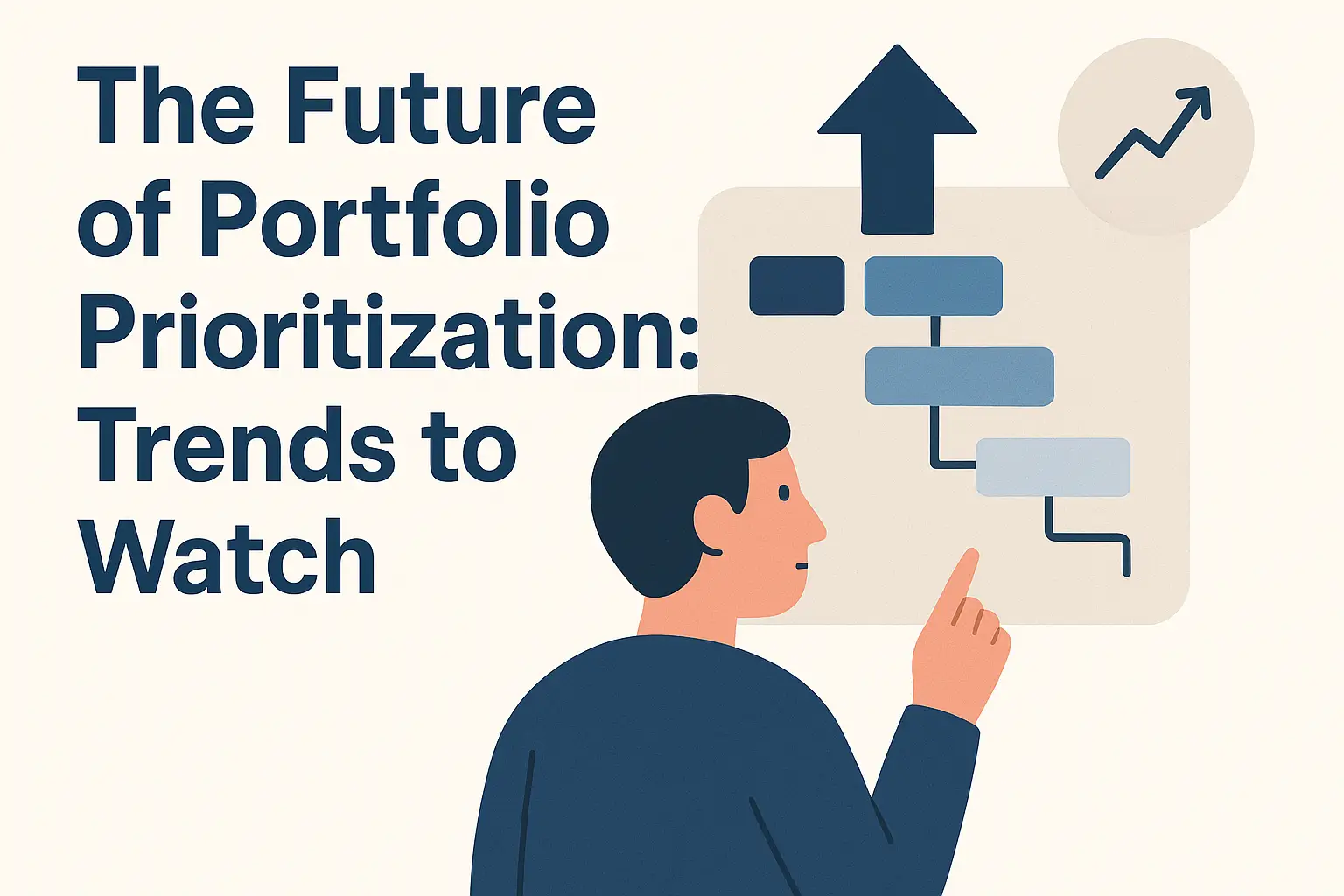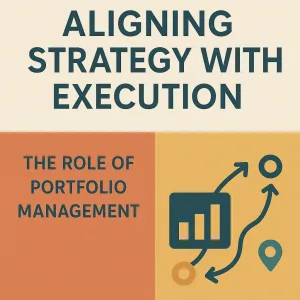Introduction: The Importance of Portfolio Prioritization
Portfolio prioritization refers to the systematic process of evaluating and ranking projects within a portfolio based on their alignment with strategic objectives, resource availability, and potential return on investment. This practice ensures that organizations allocate their resources effectively, focusing on initiatives that deliver the most value and contribute to overarching business goals. As project management continues to evolve, the significance of portfolio prioritization becomes increasingly pronounced, particularly in a landscape characterized by rapid technological advancements and shifting market dynamics.
Effective prioritization is critical for project success for several reasons:
- Resource Optimization: With limited resources, organizations must ensure that their investments are directed towards projects that promise the highest returns. Prioritization helps in identifying which projects should receive funding and attention, thereby optimizing resource allocation and minimizing waste [1].
- Strategic Alignment: Projects that are not aligned with an organization’s strategic goals can divert attention and resources away from more critical initiatives. By prioritizing projects that support strategic objectives, organizations can enhance their overall performance and ensure that all efforts are contributing to long-term success [3].
- Risk Management: Prioritization allows project managers to assess the risks associated with various initiatives. By understanding which projects carry higher risks and potential rewards, organizations can make informed decisions that balance risk and opportunity [7].
As we look ahead, several trends and innovations are poised to shape the future of portfolio prioritization. The integration of artificial intelligence and data-driven decision-making tools is expected to revolutionize how organizations evaluate and prioritize projects. These advancements will enable project managers to leverage real-time data and predictive analytics, leading to more informed and agile decision-making processes [4][8]. Additionally, the rise of hybrid project management approaches will necessitate a reevaluation of prioritization strategies to accommodate diverse working environments and team dynamics [5].
We will explore these emerging trends and innovations that are set to redefine portfolio prioritization in project management, providing insights for professionals and thought leaders looking to stay ahead in this dynamic field.
Current State of Portfolio Prioritization
Portfolio prioritization serves as a critical function that ensures resources are allocated effectively to projects that align with an organization’s strategic goals. As we look towards, it is essential to understand the current practices in portfolio prioritization, the challenges faced by project managers, and the role of technology in shaping these strategies.
Traditional Methods of Portfolio Prioritization
Historically, project managers have relied on several traditional methods for portfolio prioritization, including:
- Weighted Scoring Models: This approach involves assigning weights to various criteria such as strategic alignment, risk, and return on investment (ROI). Projects are then scored based on these criteria, allowing managers to rank them accordingly.
- Cost-Benefit Analysis: This method evaluates the expected benefits of a project against its costs, helping to determine its overall value to the organization.
- MoSCoW Method: This prioritization technique categorizes projects into four groups: Must have, Should have, Could have, and Won’t have. This helps teams focus on essential projects while managing stakeholder expectations.
While these methods have been effective, they often lack the flexibility and responsiveness required in today’s fast-paced business environment [1][4].
Common Challenges Faced by Project Managers Today
Project managers encounter several challenges:
- Alignment with Strategic Goals: One of the most significant hurdles is ensuring that projects align with the organization’s strategic objectives. As business goals evolve, maintaining this alignment can be difficult [4].
- Resource Constraints: Limited resources often force project managers to make tough decisions about which projects to prioritize, leading to potential conflicts and dissatisfaction among stakeholders [11].
- Dynamic Market Conditions: Rapid changes in market conditions and technology can render previously prioritized projects less relevant, necessitating frequent reassessments of project value and priority [1][4].
These challenges highlight the need for more adaptive and innovative approaches to portfolio prioritization.
The Role of Technology in Current Prioritization Strategies
Technology is increasingly playing a pivotal role in enhancing portfolio prioritization strategies. Some key advancements include:
- Data Analytics: Leveraging data analytics allows project managers to make informed decisions based on real-time data, improving the accuracy of project evaluations and prioritization [7].
- Artificial Intelligence (AI): AI technologies can automate routine tasks and provide insights that help project managers identify high-value projects more efficiently. This capability enables a more data-driven approach to prioritization [7].
- Collaboration Tools: Modern project management tools facilitate better communication and collaboration among team members, ensuring that all stakeholders are aligned and informed about project priorities [11].
The integration of these technologies is expected to transform portfolio prioritization, making it more agile and responsive to changing business needs.
Understanding the current state of portfolio prioritization is crucial for project management professionals as they prepare for the trends and innovations that will shape the future. By addressing traditional methods, recognizing common challenges, and embracing technological advancements, organizations can enhance their project prioritization processes and drive greater value from their portfolios.
Trend 1: Data-Driven Decision Making
The integration of data analytics is becoming a cornerstone for effective portfolio prioritization. As organizations strive for greater efficiency and effectiveness, the reliance on big data is reshaping how project managers approach decision-making processes.
The Rise of Big Data in Project Management
The advent of big data has transformed project management by providing a wealth of information that can be harnessed to make informed decisions. With the ability to collect and analyze vast amounts of data from various sources, project managers can gain insights into project performance, resource allocation, and market trends. This shift towards data-centric approaches allows for a more nuanced understanding of project dynamics, enabling teams to prioritize initiatives that align with strategic goals and deliver maximum value. The emphasis on data-driven methodologies is expected to continue growing, as organizations recognize the competitive advantage that comes from leveraging data effectively [1][2].
Importance of KPIs and Metrics in Prioritization
Key Performance Indicators (KPIs) and metrics play a crucial role in the prioritization process. By establishing clear KPIs, project managers can evaluate the potential impact of projects based on quantifiable outcomes. Metrics such as return on investment (ROI), project risk levels, and resource availability provide a framework for assessing which projects should take precedence. In 2024, the focus on developing robust metrics will intensify, as organizations seek to refine their prioritization processes further. This will involve not only traditional financial metrics but also qualitative measures that capture stakeholder satisfaction and alignment with corporate strategy [3][4].
Predictions for Evolving Data Analytics Tools in 2024
Looking ahead to 2024, we can anticipate significant advancements in data analytics tools that will enhance portfolio prioritization. Emerging technologies, including artificial intelligence (AI) and machine learning, are expected to play a pivotal role in this evolution. These tools will enable project managers to generate predictive insights, automate data analysis, and support decision-making processes with greater accuracy. As organizations increasingly adopt these advanced analytics capabilities, the ability to make real-time adjustments to project priorities based on live data will become a standard practice. This shift will not only streamline prioritization but also foster a culture of agility and responsiveness within project teams [5][6].
The future of portfolio prioritization in project management is being significantly shaped by data-driven decision-making. The rise of big data, the critical role of KPIs and metrics, and the anticipated evolution of analytics tools are all key factors that will influence how project managers prioritize their portfolios in the coming years. Embracing these trends will be essential for project management professionals aiming to navigate the complexities of an increasingly data-centric business environment.
Trend 2: Agile and Adaptive Frameworks
The adoption of Agile principles is becoming increasingly significant in portfolio prioritization. As organizations strive for greater flexibility and responsiveness, Agile methodologies are reshaping how projects are evaluated and prioritized. Here’s a closer look at the relevance of Agile principles, successful implementations, and future adaptations that are likely to influence project prioritization.
Defining Agile Principles and Their Relevance to Portfolio Prioritization
Agile principles emphasize collaboration, customer feedback, and iterative progress, which are crucial for effective portfolio prioritization. Key aspects include:
- Customer-Centric Focus: Agile prioritization is driven by the needs and feedback of customers, ensuring that the most valuable projects are prioritized based on real-time insights.
- Iterative Development: Projects are broken down into smaller, manageable increments, allowing teams to reassess priorities regularly and adapt to changing circumstances.
- Cross-Functional Collaboration: Agile frameworks promote teamwork across various departments, facilitating a holistic view of project impacts and resource allocation.
These principles enable organizations to remain adaptable in a fast-paced environment, ensuring that the portfolio aligns with strategic goals while responding to market demands.
Examples of Organizations Successfully Implementing Agile Prioritization
Several organizations have successfully integrated Agile methodologies into their project prioritization processes, showcasing the effectiveness of this approach:
- Spotify: Known for its innovative culture, Spotify employs Agile frameworks to prioritize projects based on user feedback and market trends. This approach allows them to pivot quickly and focus on initiatives that deliver the most value to their users.
- ING Bank: ING adopted Agile practices to enhance its project management processes. By implementing cross-functional teams and iterative planning, they have improved their ability to prioritize projects that align with customer needs and business objectives.
- Zara: The fashion retailer utilizes Agile principles to respond swiftly to changing fashion trends. Their prioritization process is heavily influenced by customer feedback, enabling them to launch new collections that resonate with their audience.
These examples illustrate how Agile prioritization not only enhances project outcomes but also fosters a culture of continuous improvement and responsiveness.
Future Adaptations of Agile Frameworks for Project Prioritization
As we look ahead, several adaptations of Agile frameworks are expected to further influence project prioritization:
- Integration of AI and Data Analytics: The use of artificial intelligence and data analytics will enhance decision-making in Agile prioritization. By analyzing large datasets, organizations can identify trends and make informed prioritization decisions that align with strategic goals.
- Hybrid Approaches: The future may see a blend of Agile and traditional project management methodologies, allowing organizations to tailor their prioritization processes to specific project needs and organizational contexts.
- Emphasis on Resilience: Agile frameworks will increasingly focus on building resilience within project teams, enabling them to adapt to unforeseen challenges and maintain alignment with organizational objectives.
The shift towards Agile and adaptive frameworks in portfolio prioritization is not just a trend but a necessary evolution in project management. By embracing these methodologies, organizations can enhance their responsiveness, improve project outcomes, and ensure that their portfolios are aligned with both customer needs and strategic goals. As we move into 2024, the continued innovation in Agile practices will undoubtedly shape the future of project prioritization, making it more dynamic and effective.
Trend 3: Integration of Artificial Intelligence
The integration of Artificial Intelligence (AI) into project management is revolutionizing the way project portfolios are prioritized. As organizations strive for efficiency and effectiveness in their project selection processes, AI applications are becoming increasingly vital in decision-making. Here’s a closer look at how AI is transforming project portfolio prioritization, along with its benefits and ethical considerations.
AI Applications in Project Management
AI is being leveraged in various aspects of project management, particularly in decision-making related to portfolio prioritization. By utilizing advanced algorithms, AI can analyze a multitude of factors such as strategic alignment, resource availability, risk assessment, and return on investment (ROI) to recommend which projects should be included in a portfolio. This data-driven approach allows project managers to make informed decisions that align with organizational goals and market demands [4][12].
Benefits of AI for Predicting Project Success
The potential benefits of AI in predicting project success are significant. AI tools can provide actionable insights and recommendations that enhance data-driven decision-making. For instance, predictive analytics can forecast project outcomes based on historical data, enabling project managers to identify high-potential projects and allocate resources more effectively. This capability not only improves the likelihood of project success but also optimizes the overall portfolio performance by ensuring that the most promising initiatives receive the necessary support [3][12].
Moreover, as AI continues to evolve, its ability to deliver product and service quality improvements will further enhance project outcomes. The growing implementation of AI in project management signifies a shift towards more sophisticated and strategic approaches to portfolio prioritization, ultimately leading to better alignment with business objectives and increased revenue growth [5][9].
Ethical Considerations and Challenges
Despite the advantages, the integration of AI in project prioritization also raises ethical considerations and challenges. One major concern is the potential for bias in AI algorithms, which can lead to unfair prioritization of projects based on flawed data or assumptions. Ensuring that AI systems are transparent and accountable is crucial to mitigate these risks. Project managers must be vigilant in monitoring AI outputs and remain involved in the decision-making process to ensure that ethical standards are upheld [8][12].
Additionally, the reliance on AI may lead to a reduction in human oversight, which can be problematic if AI systems fail to account for nuanced factors that a human project manager might consider. Balancing AI capabilities with human judgment is essential to maintain the integrity of the prioritization process and to foster trust among stakeholders [8][12].
The integration of AI into project portfolio prioritization is set to reshape project management. By harnessing the power of AI, project managers can enhance decision-making, predict project success more accurately, and navigate the ethical challenges that accompany this technological advancement. As the field continues to evolve, staying informed about these trends will be crucial for project management professionals and thought leaders aiming to lead their organizations into the future.
Trend 4: Stakeholder Engagement and Collaboration Tools
Stakeholder engagement has emerged as a critical component in the portfolio prioritization process. As organizations strive for greater efficiency and alignment with strategic goals, the integration of collaboration tools and methodologies is becoming increasingly vital. Here are some key points to consider regarding the future of stakeholder engagement in project prioritization.
Role of Collaboration Tools
Collaboration tools are essential in facilitating effective communication and engagement among stakeholders. These platforms enable project managers to:
- Streamline Communication: Tools such as project management software and communication platforms allow for real-time updates and discussions, ensuring that all stakeholders are informed and can contribute their insights promptly. This is particularly important in hybrid work environments where team members may be dispersed [2].
- Enhance Participation: By providing a centralized space for feedback and discussions, collaboration tools encourage more stakeholders to participate in the prioritization process. This inclusivity can lead to more comprehensive insights and a better understanding of project impacts across the organization [11].
Impact of Increased Transparency
Transparency in the prioritization process is crucial for fostering trust and collaboration among stakeholders. As organizations adopt more transparent practices, the following impacts can be observed:
- Informed Decision-Making: When stakeholders have access to clear information about project goals, resource allocation, and potential risks, they can make more informed contributions to the prioritization discussions. This leads to decisions that are better aligned with organizational objectives and stakeholder expectations [13].
- Alignment of Interests: Increased transparency helps to align the interests of various stakeholders, reducing conflicts and enhancing collaboration. When stakeholders understand the rationale behind prioritization decisions, they are more likely to support the outcomes, leading to smoother project execution [8].
Future Tools and Methodologies
Looking ahead, several innovations are expected to shape the future of stakeholder collaboration in project prioritization:
- AI-Driven Insights: The integration of artificial intelligence in collaboration tools will enable project managers to analyze stakeholder feedback more effectively. AI can identify patterns and sentiments in stakeholder input, providing valuable insights that can inform prioritization decisions [11].
- Enhanced Visualization Tools: Future collaboration platforms are likely to incorporate advanced visualization techniques, allowing stakeholders to see the potential impacts of prioritization decisions in real-time. This can facilitate more dynamic discussions and help stakeholders understand the implications of their input [1].
- Sustainability and Ethical Considerations: As organizations increasingly focus on sustainability, future methodologies for stakeholder collaboration will likely incorporate ethical considerations and sustainability metrics into the prioritization process. This will ensure that projects not only meet business objectives but also align with broader societal goals [9].
The future of portfolio prioritization will heavily rely on effective stakeholder engagement facilitated by innovative collaboration tools. By embracing transparency and leveraging advanced methodologies, project management professionals can enhance their prioritization processes, leading to more successful project outcomes and stronger stakeholder relationships.
Trend 5: Sustainable Project Prioritization
As the global focus shifts towards sustainability, project management professionals are increasingly recognizing the importance of sustainable project prioritization. This trend is not just a passing phase; it is becoming a fundamental aspect of how projects are selected and managed. Here’s a closer look at what sustainable project prioritization entails, the integration of environmental and social governance (ESG) criteria, and predictions for its influence on project prioritization in the coming years.
Defining Sustainable Project Prioritization
Sustainable project prioritization refers to the process of selecting projects based on their potential to deliver long-term environmental, social, and economic benefits. This approach goes beyond traditional metrics of success, such as cost and time, to include the broader impact of projects on society and the environment. Sustainable prioritization aims to ensure that projects contribute positively to the community and the planet, aligning with the principles of sustainable development.
Integration of Environmental and Social Governance (ESG) Criteria
The integration of ESG criteria into project selection is becoming increasingly prevalent. Organizations are now evaluating projects not only on financial returns but also on their environmental impact and social responsibility. This includes assessing:
- Environmental Impact: Projects are evaluated based on their carbon footprint, resource consumption, and overall ecological impact. Sustainable practices, such as reducing waste and utilizing renewable resources, are prioritized.
- Social Responsibility: Projects that promote social equity, community engagement, and stakeholder involvement are favored. This includes considering how projects affect local communities and ensuring that they contribute to social well-being.
By incorporating ESG criteria, organizations can make more informed decisions that align with their sustainability goals and corporate social responsibility commitments. This shift is indicative of a broader trend where stakeholders demand greater accountability and transparency from organizations regarding their environmental and social practices.
Predictions for the Future of Project Prioritization
Looking ahead, sustainability will play a crucial role in shaping project prioritization in the coming years. Here are some predictions:
- Increased Regulatory Pressure: As governments and regulatory bodies implement stricter environmental regulations, organizations will be compelled to prioritize projects that comply with these standards. This will lead to a greater emphasis on sustainable practices in project management.
- Enhanced Stakeholder Engagement: Stakeholders, including customers, investors, and employees, are increasingly prioritizing sustainability. Organizations will need to engage these stakeholders in the project selection process, ensuring that their values and expectations are reflected in project prioritization.
- Technological Innovations: Advances in technology will facilitate better assessment and reporting of sustainability metrics. Tools that analyze the environmental and social impacts of projects will become more sophisticated, enabling project managers to make data-driven decisions that prioritize sustainability.
- Long-term Value Creation: Organizations will shift their focus from short-term gains to long-term value creation. Projects that demonstrate a commitment to sustainability will be prioritized, as they are likely to yield greater benefits over time, both for the organization and society at large.
Sustainable project prioritization is set to become a defining trend in project management. By integrating ESG criteria and focusing on long-term impacts, organizations can ensure that their project portfolios not only achieve financial success but also contribute positively to the world. Project management professionals must embrace this shift to remain relevant and effective in their roles.
Conclusion: Preparing for the Future of Portfolio Prioritization
As we look ahead, portfolio prioritization in project management is evolving rapidly, driven by several key trends that professionals must embrace to remain competitive. Here’s a recap of the main trends shaping the future of portfolio prioritization:
- Increased Automation: The integration of AI technologies is set to automate many project management tasks, allowing professionals to focus on strategic decision-making rather than routine operations. This shift is expected to enhance efficiency and accuracy in prioritization processes, as AI can analyze vast amounts of data to identify the most impactful projects [2][4].
- Generative AI and Data Analytics: The rise of generative AI will enable project managers to leverage advanced data analytics for better decision-making. By utilizing these technologies, organizations can gain deeper insights into project performance and resource allocation, leading to more informed prioritization [1][4].
- Hybrid Project Management Approaches: The adoption of hybrid methodologies is becoming increasingly popular, blending traditional and agile practices. This flexibility allows organizations to adapt their prioritization strategies based on project needs and market conditions, fostering a more responsive project management environment [4][6].
- Focus on ESG Practices: Environmental, Social, and Governance (ESG) considerations are becoming integral to project prioritization. Organizations are increasingly prioritizing projects that align with sustainability goals, reflecting a broader commitment to responsible business practices [4][5].
In light of these trends, it is crucial for project management professionals to embrace change and innovate their prioritization processes. By staying informed and adapting to these advancements, organizations can enhance their project outcomes and maintain a competitive edge in an increasingly complex business environment.
Final thoughts emphasize the importance of proactive adaptation. The future of portfolio prioritization is not just about selecting the right projects; it’s about fostering a culture of adaptability and leveraging advanced technologies to navigate the evolving landscape. By prioritizing innovation and embracing new methodologies, project management professionals can ensure they are well-prepared for the challenges and opportunities that lie ahead.
Find out more about Shaun Stoltz https://www.shaunstoltz.com/about/.
This post was written by an AI and reviewed/edited by a human.



